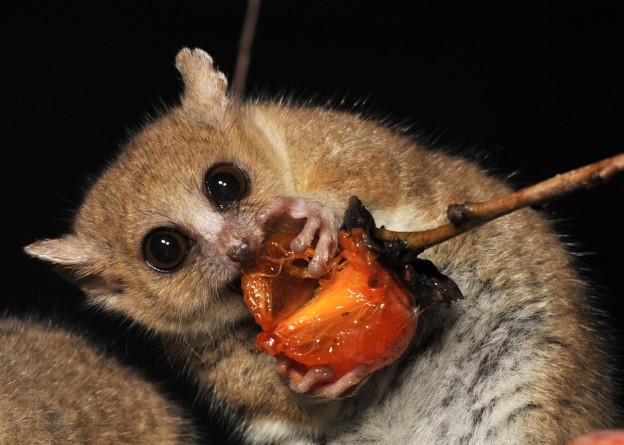The discovery of animal models in biomedical studies is a boon to mankind. From fruit flies to chimpanzees, a variety of animals have made their fair contributions to science. But mice are the most significant of the lot. Infectious disease research, metabolic studies, drug testing, transplant studies, tissue graft studies, cancer research and the cosmetic industry has exploited the most from them. The main reason for their mundane presence in experiments is due to their physiological characteristics. Ease of handling, high fecundity, control of gene pool, small size, short lifespan, mammalian origin, large litter size, dietary similarities and economic viability have optimized the use of mice in research. A non rodent model with high phylogenetic similarity to humans and having majority of these mice traits has entered the arena- The Mouse Lemur.
Characteristics
The grey mouse lemurs (Microcebus murinus), one of the smallest primates,are 40 g in weight with a lifespan of 10-15 years. They reach sexual maturity in 6–8 months and have a gestation period of 59-62 days. It is also known for its high fecundity and twin bearing. They are strictly nocturnal and are endemic to Madagascar.Their dietary pattern includes feeding on fruits, flowers, leaves, sap, arthropods and vertebrates.
Research possibilities
Non-human primate models are highly relevant to human studies due to similarities in anatomical, physiological genetic features and population structure. A jubilant air has invaded labs to study the length and breadth of the animal including organs, expressions, behavior, ecology and the genome. The versatility of the primate is attributable to lab mice as their potential in aging, metabolic and genetic research is being explored.Photoperiod studies, primate pheromone studies, thermoregulation and energy metabolism studies due to torpor are also in focus.
Extensive aging studies are being conducted, and are predicted to be reflections of humans.Physically, mouse lemurs face complete hair bleaching in geriatric population similar to human whilst internally, hormonal dysfunction (DHEA-S, IGF-1,testosterone, oestrogen),alteration in the circadian rhythm (fragmentation, desynchronization), thermoregulatory changes, sensorimotor and cognitive decline, structural and functional modifications of brain are identical to man.Data correlating thermoregulation with animal behaviour and circadian rhythm with aging due to neural calbindin protein has been reported.Plasma Interferon’s have been revealed to predict ageing subsequently suggesting that anti-inflammatory constituents may have the potential to regulate circadian rhythms in the elderly.
Alzheimer’s disease research seems to have found its host in mouse lemurs. Unlike mice, prominent neurological lesions have been noticed in study groups such as localized atrophy and diffuse protein deposits (Aβ and tau) along with impaired cognitive function, aggressive nature, reduced socialization, and hindered body rhythms.
Conclusion
A phylogenetic analysis of potential animal models, revealed 91% nucleotide similarity to human with mouse lemurs, indicating the rise of a new animal model in research. Despite these similarities, mouse lemur’s genome offers a platform to study chromosome rearrangements, evolution and speciation, a difficult feat in human genome.
Reference
- Ezran, C., Karanewsky, C.J., Pendleton, J.L., Sholtz, A., Krasnow, M.R., Willick, J., Razafindrakoto, A., Zohdy, S., Albertelli, M.A. and Krasnow, M.A., 2017. The mouse lemur, a genetic model organism for primate biology, behavior, and health. Genetics, 206(2):651-664.
- https://www.nature.com/articles/d41586-019-01789-0
- https://lemur.duke.edu/discover/meet-the-lemurs/grey-mo
- Languille, S., Blanc, S., Blin, O., Canale, C.I., Dal-Pan, A., Devau, G., Dhenain, M., Dorieux, O., Epelbaum, J., Gomez, D. and Hardy, I., 2012. The grey mouse lemur: a non-human primate model for ageing studies. Ageing research reviews, 11(1)150-162.
